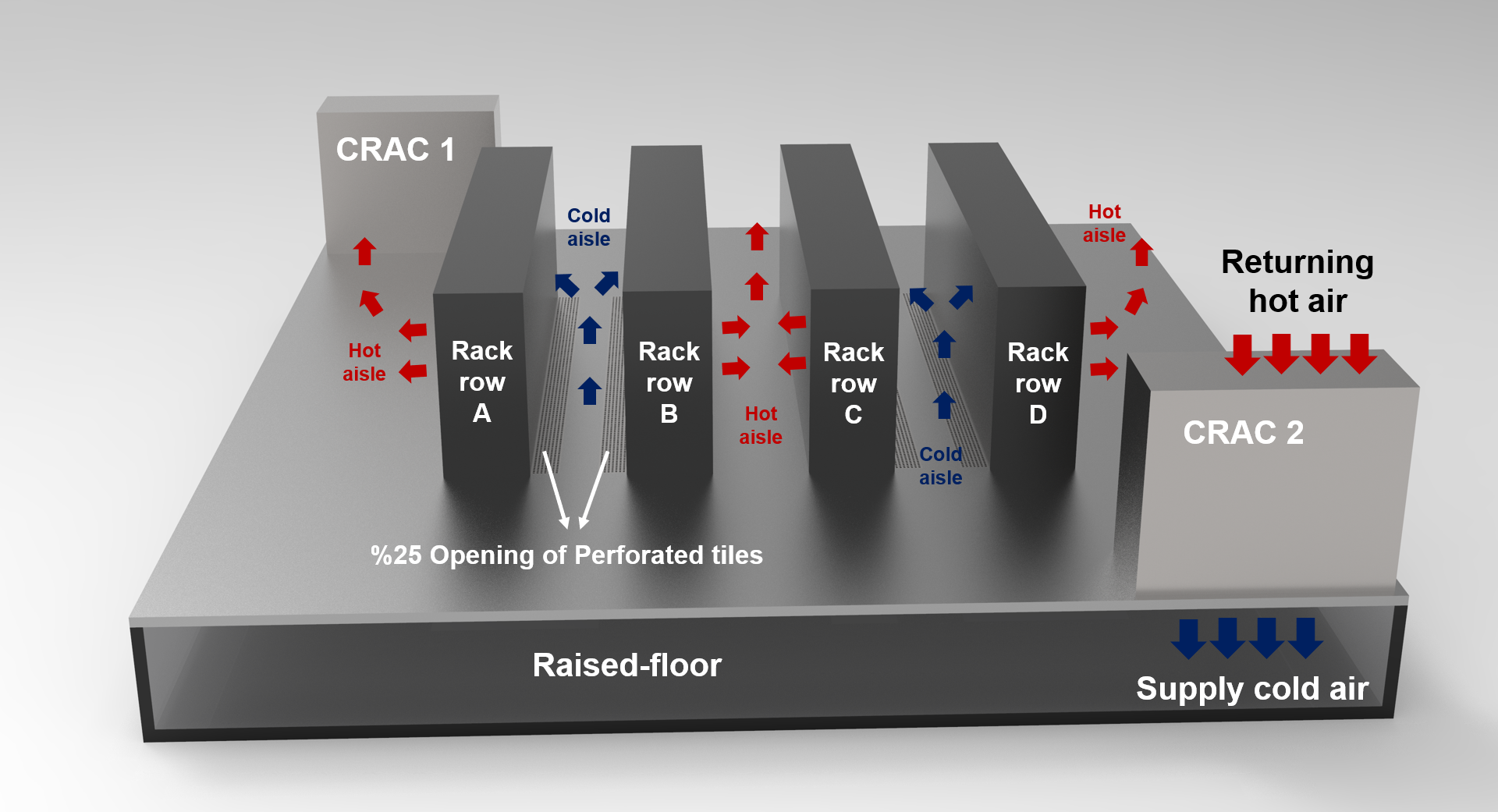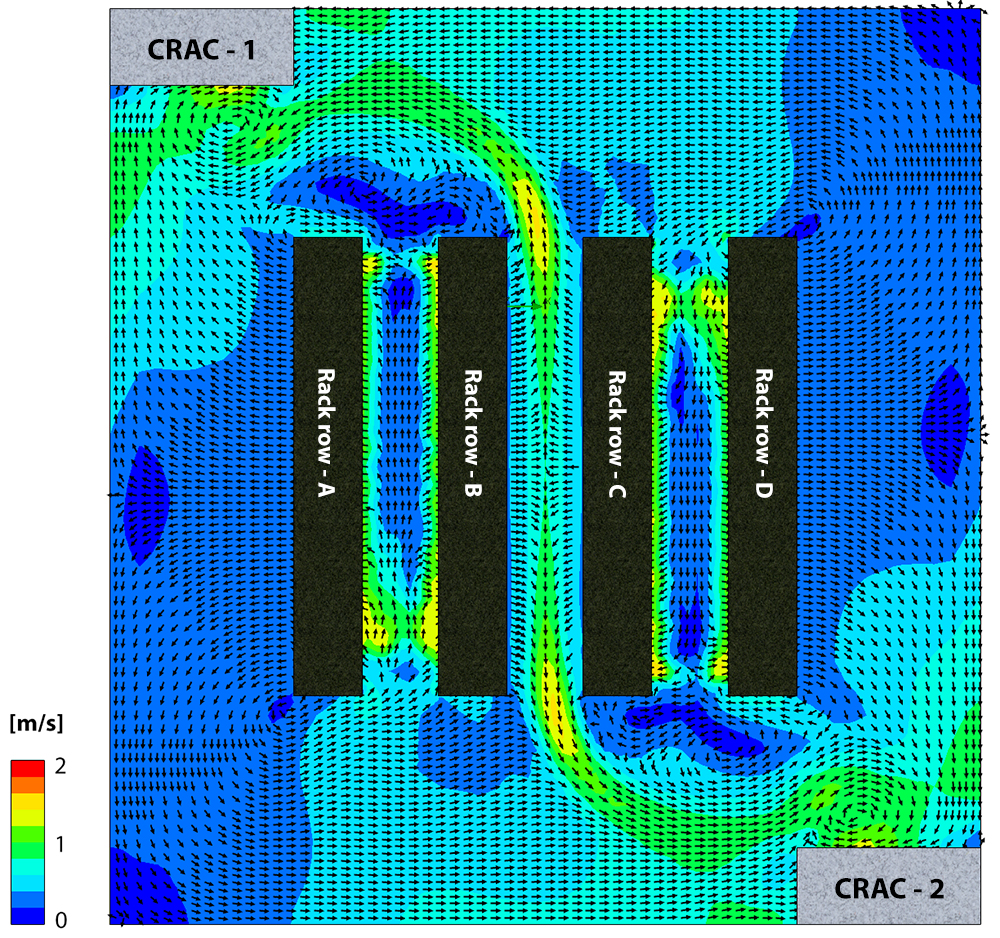Data Centers
According to the Data Centers and Data Transmission Networks report published by the International Energy Agency in 2019, the power consumption of data centers on a global scale in 2019 is approximately 200 terawatt-hours. This is approximately 0.8 percent of the total electrical energy consumed in the world. The biggest power demand in data centers is due to cooling loads. This ratio corresponds to approximately more than half of the energy consumed in data centers. Considering all these, the most efficient and least lossy designs will be the most reasonable solution approach for data centers.

Mechanical design teams sometimes with precision air conditioners, sometimes VRF or VAV and so on. systems with cooling fictions. It is essential to make the highest heat transfer homogeneously with the movement of air. The critical issue that the designer demands from us is to minimize the pressure losses and not to increase the ambient temperature above the specified degree and to ensure that the air velocities and general distribution are as homogeneous as possible. Heat generation amounts are determined for each rack cabinet and device type. It is important for approval during commissioning that the air coolant that can be given to the space and the air collected from the system suction vents do not exceed the critical values of the suction temperatures.

Each project type differs in itself. For example, the placement, types, fan models or grid structures of devices in cabinets are sometimes different. The most critical support provided by the calculation tools is that every detail can be simulated with modeling detail. For example, when an underfloor system is constructed, numerical modeling of grill permeability can be done, and sometimes the grills can be analyzed with actual measurements. The front and rear grille details of the cabin, the working pressure information of the air conditioners (should be analyzed together with the variable flow/pressure values) or the details of the transport of air without pressure loss for homogeneous distribution should be examined.
Fluid analysis methods, which can be used to critique the performance of the system, have also become necessary in a short time to answer whether the first design will work or not. The real opportunity presented here is to create unique designs with experience and competence, being aware that there are no geometrical or physical limitations in solving the heat and flow problem in software.





